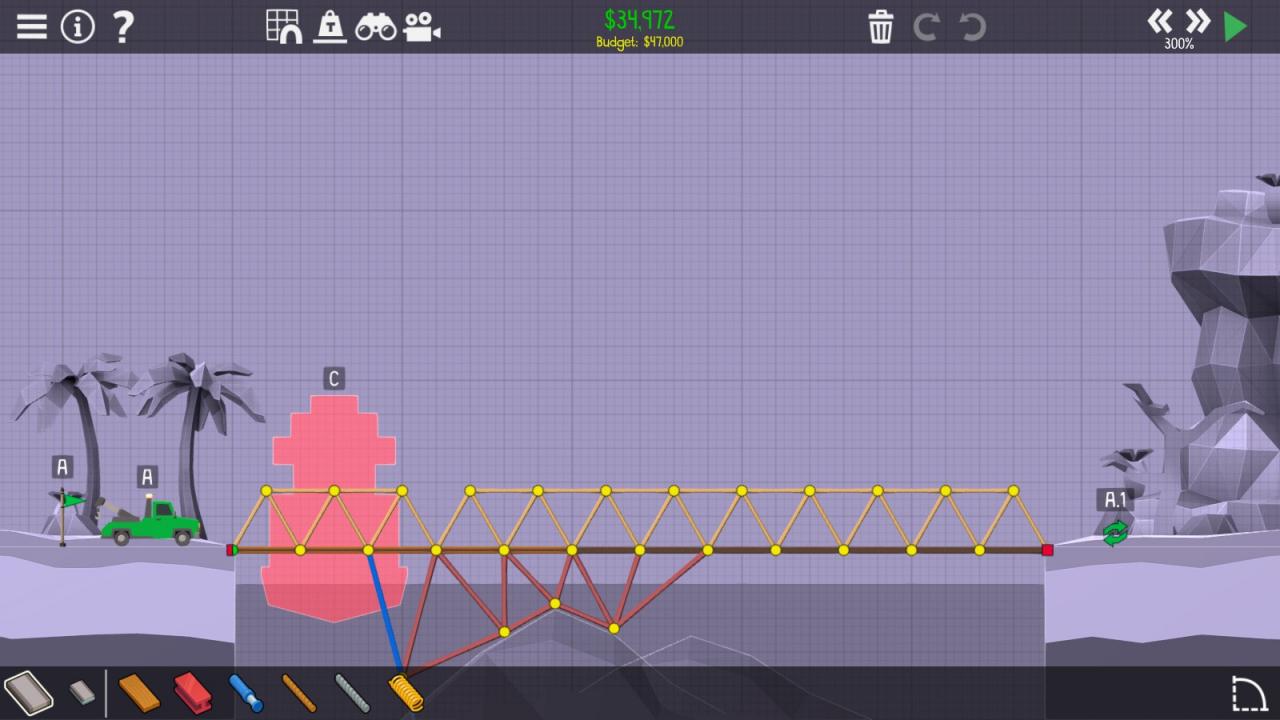

Of course, you can't just build a bridge that's supported by thousands of steal beams and cables, since that would make you go over budget. They allow you to cushion vehicle landing in later levels.Īs you progress through the game, you unlock more materials. Different materials are given to you, such as wood, roads, reinforced roads, steel beams, rope, steel cables, hydraulics, and springs - which are a new addition to this game. The main goal of every level in Poly Bridge 2 is to build a bridge that can function under given conditions - having transport successfully cross the bridge, sometimes going through certain checkpoints, also having other objects like ships or air balloons go through/under the platform without damaging structural integrity. The game overall has more of a "professional" presentation compared to the 2016 version.

It doesn't have a 'plot' per say, but a campaign mode with 64 new levels, it doesn't have a voiced MC, no AAA orchestral soundtrack, no RTX support - and it doesn't really need any of that. What Poly Bridge 2 does have is improvements - a better designed UI, new mechanics, an improved physics engine, new transport, and SPRINGS!.

Poly Bridge 2 doesn't stray away from the formula that made its predecessor a hit, being a deceivingly simple game where you build bridges that need to be tested by various means of transportation. That is, I realized not really much is different in comparison to what I saw while playing Poly Bridge 2 - the same mechanics are there, controls are identical, the soundtrack sometimes feels like it's even in the same key, and yet it is still a new game. While working on this review, I was about to purchase the first game just to get a better understanding as to what exactly Poly Bridge 2 improves upon, but after viewing a copious amount of gameplay of the first game, I "understood" the mechanics of it. Let me start this review with a controversial fact: I have not played the first Poly Bridge.


 0 kommentar(er)
0 kommentar(er)
